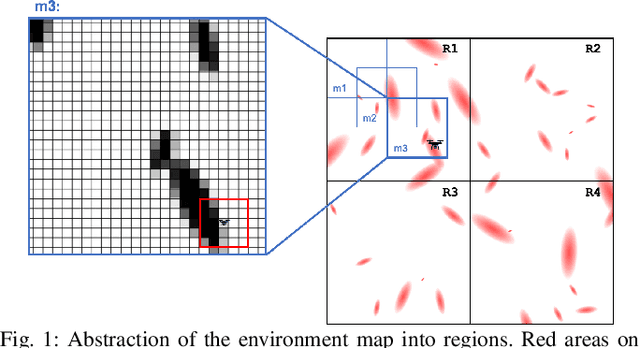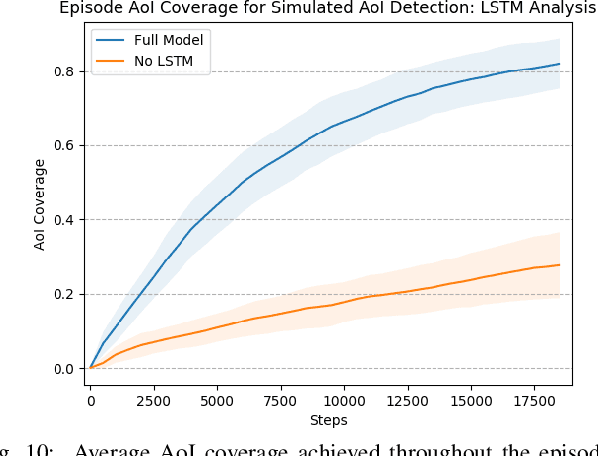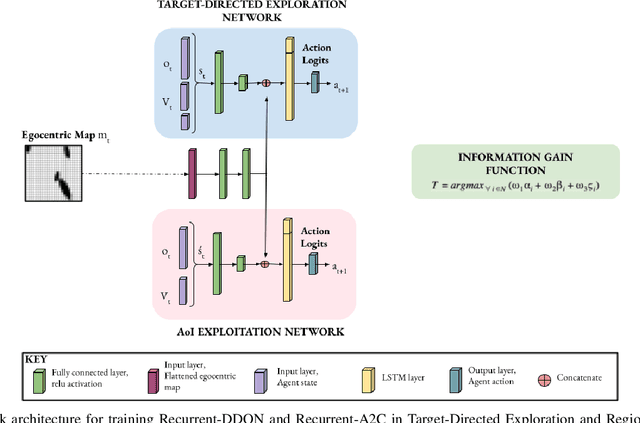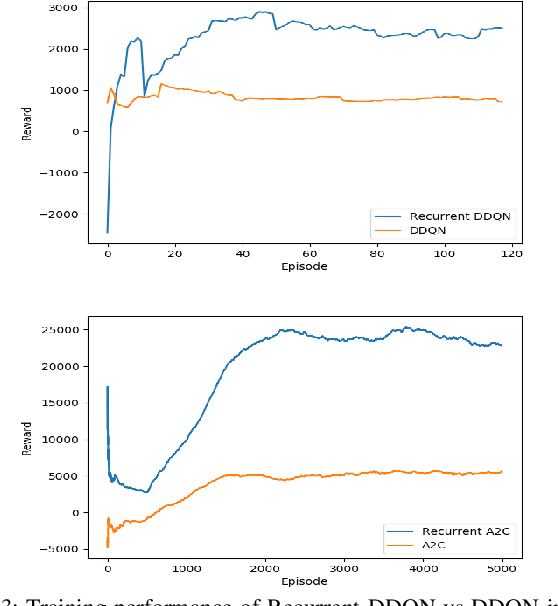Ashley Peake
Deep Reinforcement Learning for Adaptive Exploration of Unknown Environments
May 04, 2021



Abstract:Performing autonomous exploration is essential for unmanned aerial vehicles (UAVs) operating in unknown environments. Often, these missions start with building a map for the environment via pure exploration and subsequently using (i.e. exploiting) the generated map for downstream navigation tasks. Accomplishing these navigation tasks in two separate steps is not always possible or even disadvantageous for UAVs deployed in outdoor and dynamically changing environments. Current exploration approaches either use a priori human-generated maps or use heuristics such as frontier-based exploration. Other approaches use learning but focus only on learning policies for specific tasks by either using sample inefficient random exploration or by making impractical assumptions about full map availability. In this paper, we develop an adaptive exploration approach to trade off between exploration and exploitation in one single step for UAVs searching for areas of interest (AoIs) in unknown environments using Deep Reinforcement Learning (DRL). The proposed approach uses a map segmentation technique to decompose the environment map into smaller, tractable maps. Then, a simple information gain function is repeatedly computed to determine the best target region to search during each iteration of the process. DDQN and A2C algorithms are extended with a stack of LSTM layers and trained to generate optimal policies for the exploration and exploitation, respectively. We tested our approach in 3 different tasks against 4 baselines. The results demonstrate that our proposed approach is capable of navigating through randomly generated environments and covering more AoI in less time steps compared to the baselines.
On the Basis of Sex: A Review of Gender Bias in Machine Learning Applications
Apr 06, 2021

Abstract:Machine Learning models have been deployed across almost every aspect of society, often in situations that affect the social welfare of many individuals. Although these models offer streamlined solutions to large problems, they may contain biases and treat groups or individuals unfairly. To our knowledge, this review is one of the first to focus specifically on gender bias in applications of machine learning. We first introduce several examples of machine learning gender bias in practice. We then detail the most widely used formalizations of fairness in order to address how to make machine learning models fairer. Specifically, we discuss the most influential bias mitigation algorithms as applied to domains in which models have a high propensity for gender discrimination. We group these algorithms into two overarching approaches -- removing bias from the data directly and removing bias from the model through training -- and we present representative examples of each. As society increasingly relies on artificial intelligence to help in decision-making, addressing gender biases present in these models is imperative. To provide readers with the tools to assess the fairness of machine learning models and mitigate the biases present in them, we discuss multiple open source packages for fairness in AI.
 Add to Chrome
Add to Chrome Add to Firefox
Add to Firefox Add to Edge
Add to Edge